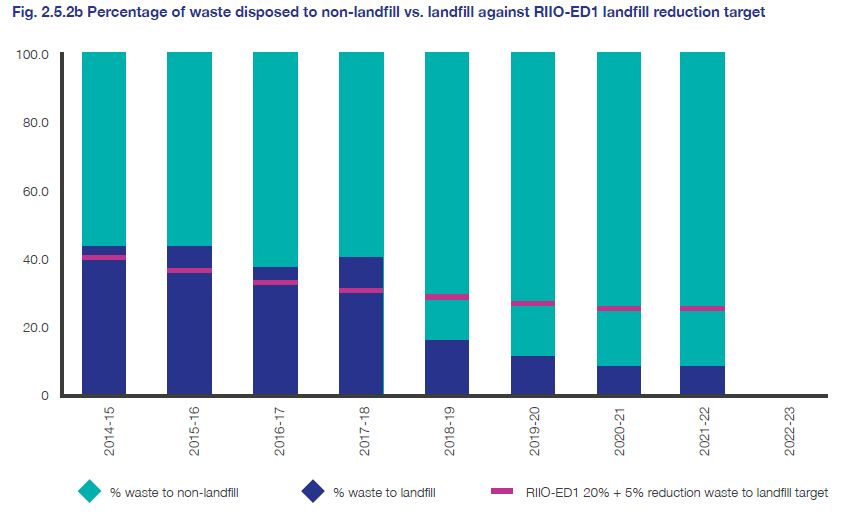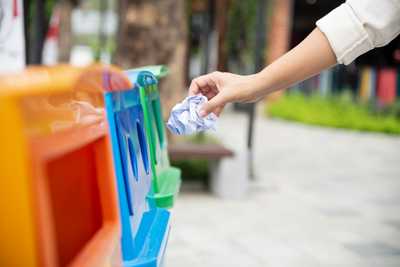Introduction
We work closely with all of our waste contractors ensuring that wherever possible waste streams are diverted from landfill, applying the principles of the waste hierachy throughout. As a result, for the fourth year we have outperformed our RIIO-ED1 target for the proportion of our waste being sent to landfill.
Waste management
In order to achieve our RIIO-ED2 Core commitment on waste we must clearly target the tonnage of waste we receive and produce across our business – employing the principles of the waste hierarchy and reducing the actual tonnage of waste in the first instance before focusing on the amount of waste being reused, recycled or recovered.
We met the initial 20% reduction target from 2015/16 to 2017/18 and we have continued to outperform the 5% reduction target year on year. In 2021/22, we disposed just 8.8% of our waste to landfill. The overall tonnage of waste produced by NGED in 2021/22 has increased by 145 tonnes from our 2020/21 total of 4,885 to 5,030. This slight increase is to be expected following business-as-usual resuming after the COVID-19 pandemic.
This decrease in our reliance on disposing waste to landfill is a result of working extensively with our existing waste contractors to find alternatives to landfilling waste, utilising local waste to energy plants wherever they are available and improving waste awareness at our local depots.

In order to achieve our RIIO-ED2 Core commitment on waste we must clearly target the tonnage of waste we receive and produce across our business – employing the principles of the waste hierarchy and reducing the actual tonnage of waste in the first instance before focusing on the amount of waste being reused, recycled or recovered
Waste initiatives
During 2022/23 we must continue to target the tonnage of waste we receive and produce across our business – employing the principles of the waste hierarchy and reducing the actual tonnage of waste in the first instance before focusing on the amount of waste being reused, recycled or recovered.
We will specifically:
- Liaise with our manufacturers and suppliers to identify opportunities to reduce the amount of packaging and embedded waste entering our business.
- Work with our Purchasing Team to ensure that waste reduction initiatives are a key requirement of future contracts where applicable.
- Continue to work with our waste contractors and local depots to identify alternative disposal routes for our waste, increasing the amount of waste we recycle and reduce further our reliance on both landfill and recovery disposal.

Single use plastics
Single use plastics We and our stakeholders are keen to reduce the amount of single use plastics entering our business.
Reducing this waste stream supports not only our commitment of reducing waste overall but also our ambition to use resources more efficiently and sustainably and offers an excellent area for collaboration with our suppliers to reduce the environmental burden.
While good progress has been made with smaller items like vending machine cups during RIIO-ED2 further evaluation of our incoming goods is expected to yield more opportunities and examples where items may be substituted.
We have begun consultation with our staff to identify where single use plastics are currently used in our depots and in products used on the network

